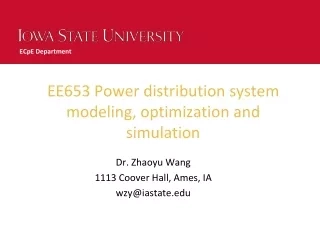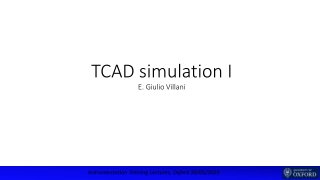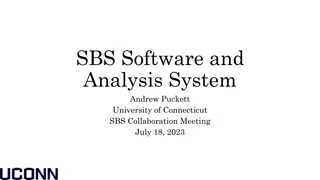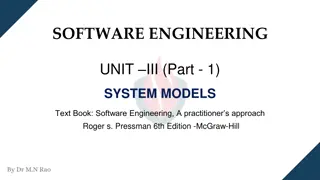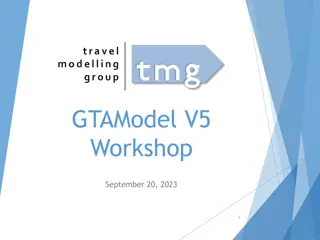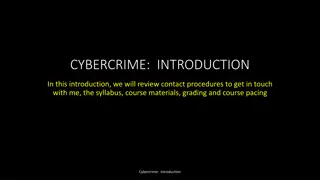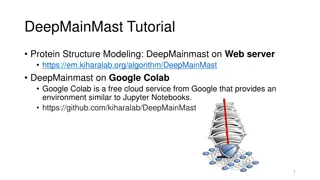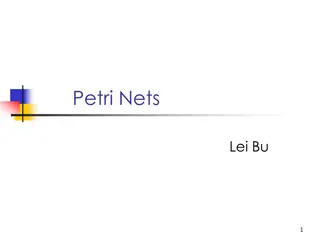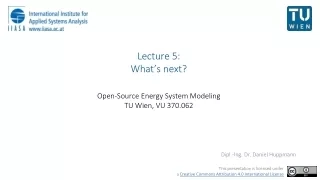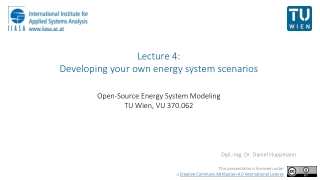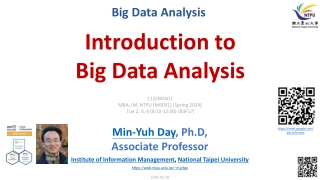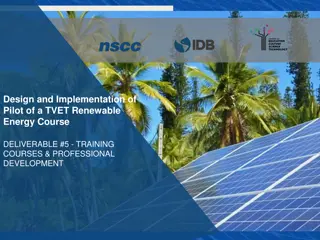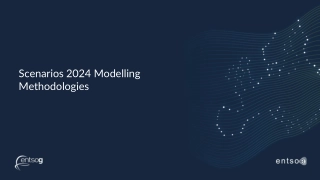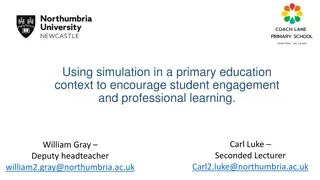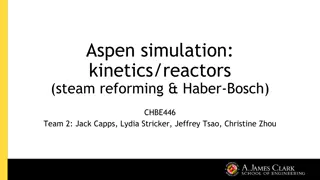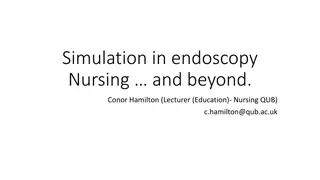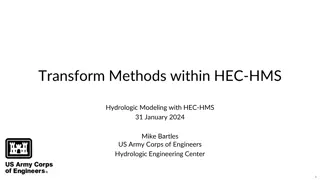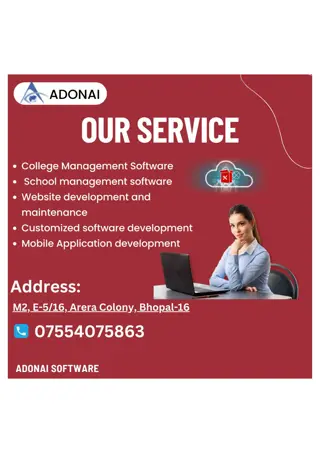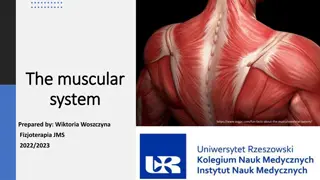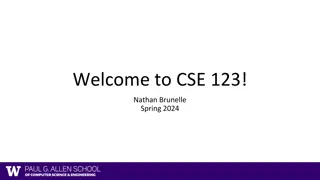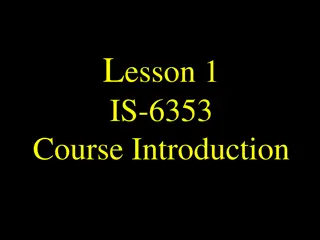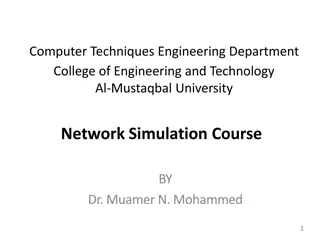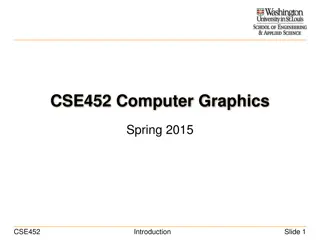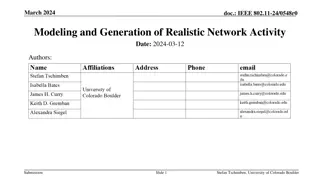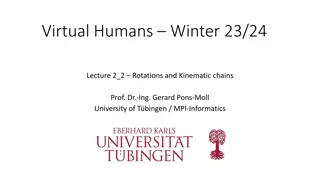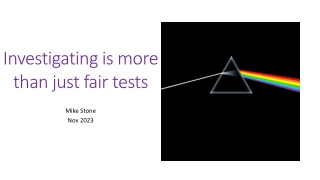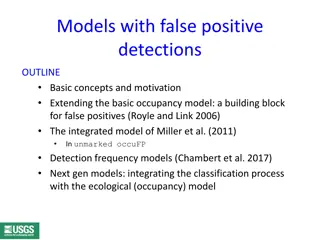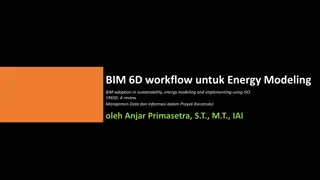System Modeling and Simulation Course Overview
This course covers the basics of systems modeling, discrete-event simulation, and computer systems performance evaluation. Topics include Monte Carlo simulation, probability models, simulation output analysis, queueing theory, and more. Professor Carey Williamson leads the course with a focus on practical applications and problem-solving techniques.
System Modeling and Simulation Course Overview
PowerPoint presentation about 'System Modeling and Simulation Course Overview'. This presentation describes the topic on This course covers the basics of systems modeling, discrete-event simulation, and computer systems performance evaluation. Topics include Monte Carlo simulation, probability models, simulation output analysis, queueing theory, and more. Professor Carey Williamson leads the course with a focus on practical applications and problem-solving techniques.. Download this presentation absolutely free.
Presentation Transcript
CPSC 531: System Modeling and Simulation Carey Williamson Department of Computer Science University of Calgary Fall 2017
Agenda Welcome! Course Overview Learning Outcomes Administrative Details Expectations Q&A Today s Lecture Material: Basics of Modeling Computer Systems Performance Evaluation Simulation Modeling Example 2
Course Overview The purpose of this course is to learn the basics of systems modeling, discrete-event simulation, and computer systems performance evaluation. Syllabus: Intro to modeling and simulation (1 week) Random numbers and Monte Carlo simulation (1 week) Probability models: discrete and continuous (2 weeks) Discrete-event simulation methods (2 weeks) Simulation output analysis (2 weeks) Simulation input analysis (2 weeks) Queueing theory and Markov chains (2 weeks) 3
Learning Outcomes Classify/describe different types of simulations. Solve simple problems using Monte Carlo methods. Develop discrete-event simulation models. Generate random variates using inverse transforms. Understand differences between transient and steady-state behaviour of a system. Compute confidence intervals from simulation data. Conduct goodness of fit tests for input data models. Use basic queueing theory for simple system models. 4
Administrative Details Course Web Site: http://www.cpsc.ucalgary.ca/~carey/CPSC531 D2L Site: site exists, with actual content coming soon! Lectures: Tue/Thur 9:30am-10:45am MS 211 Instructor: Carey Williamson Tutorials: Tue/Thur 1:00pm-1:50pm SS 006 TA: Jonathan Hudson (tutorials start week of Sept 18) Textbook: Discrete-Event Simulation: A First Course Grading: Assignments (40%) - four programming assignments Midterm Exam (20%) - in-class on Thursday, October 26 Final Exam (40%) - two-hour closed book exam Grading Scheme: threshold-based step-function 5
Instructor Professor: Carey Williamson Department: Computer Science Office: ICT 736 Office Hours: Mondays (1:00pm-3:00pm) or by appt Phone: (403) 220-6780 Email: carey@cpsc.ucalgary.ca (any time!) Web Site: http://www.cpsc.ucalgary.ca/~carey Research Interests: Computer networks, Computer systems performance evaluation, Network simulation Hobbies: Golf, curling, hiking, travel, cooking, family 6
Agenda Welcome! Course Overview Learning Outcomes Administrative Details Expectations Q&A Today s Lecture Material: Basics of Modeling Computer Systems Performance Evaluation Simulation Modeling Example 7
Basics of Modeling What is a model? An abstract representation of a (real) system that captures the essential characteristics or properties of the system Often requires making simplifying assumptions about how the system actually works Examples: Model airplane; molecular model; performance model Modeling is an essential tool in computer system performance evaluation (as we will see shortly) Note that modeling is both an art and a science 8
Modeling: A Reality Check A famous quote: All models are wrong; some models are useful. - George Box, 1976 Models are useful when they provide critical insights into the system behaviour (e.g., its performance) Models are especially valuable when they are simple, elegant, and computationally fast 9
Computer Systems Performance Evaluation Performance is a key consideration in the design, procurement, and use of computer systems. The typical goal is to get the highest possible performance for a given cost (e.g., dollars, energy) Performance evaluation is a well-defined sub-domain of computer science that has been around for 40 yrs Need basic knowledge of the tools and techniques of computer systems performance evaluation What are the performance requirements? How to compare different system alternatives? 10
Objectives of Performance Evaluation Establish a quantitative understanding of system behaviour This understanding should be sufficient for: Evaluating alternative system designs/configurations e.g., should our Web site run on one server or two servers? e.g., should Web server software be Apache, IIS, or nginx? Predicting system performance for a given set of inputs e.g., predict the mean response time of a Web server when the number of users is increased Performance debugging and system tuning e.g., identify/remove bottlenecks, optimize configuration e.g., why is D2L so slow? is it the server, or the network? 11
Approaches to Performance Evaluation Three main approaches: 1. Experimental Obtain measurement data by observing the events and activities on an existing system; evaluate new algorithms or designs by implementing and comparing them in a real system 2. Simulation modeling Develop a computer program that implements an abstracted model of the physical system; manipulate the model and/or its inputs to estimate the system performance (e.g., randomization) 3. Analytical modeling Represent the system by an abstract mathematical model of the physical system (e.g., formula); manipulate parameters of the model to obtain information about system performance 12
High Level Overview Performance Evaluation Performance Measurement Performance Modeling Analytic Modeling Simulation 13
Performance Measurement Measure the performance directly on a system Need to characterize the workload placed on the system during measurement Generally provides the most valid results Nevertheless, not very flexible May be difficult (or even impossible) to vary some workload parameters 14
Performance Modeling Construct a model An abstracted representation of a system obtained by making assumptions about how the system works Captures the most salient characteristics of the system Reasons for using models Experimenting with the real system may be too costly too risky, or too disruptive to system operation System may not even exist yet (e.g., planning stage) 15
Analytic Modeling Mathematical methods are used to obtain solutions to the performance measures of interest Examples: queueing models for computer systems or computer communication networks Numerical results are easy to compute if a simple analytic solution is available Useful approach when one only needs rough estimates of performance measures Solutions to complex models may be difficult to obtain 16
Simulation Modeling Develop a simulation program that implements the model Run the simulation program and use the data collected to estimate the performance measures of interest (typically using randomization) A system can be studied at an arbitrary level of detail It may be costly to develop and run the simulation program 17
Advantages of Simulation New policies and procedures can be explored without disrupting the ongoing operation of the real system New designs can be tested without committing resources for their acquisition Time can be compressed or expanded to allow for a speed-up or slow-down of the phenomenon under study Insight can be obtained about the interactions of variables, and which ones have the most impact on system performance Can obtain answers to What if questions 18
Areas of Application for Simulation Manufacturing applications Financial markets Military applications Logistics and supply chain management Transportation modes and traffic Business process simulation Health care optimization Facility placement problems Communication networks And many more! 19
Simulation Example Hair salon (e.g., Witchcraft) Two stylists (one fast, one slow) Limited size waiting room (N chairs) Customers arrive at random times (no appts) Customers are impatient (don t like waiting long) Question: How many customers do you lose by not having enough chairs in the waiting room? 20
Agenda Welcome! Course Overview Learning Outcomes Administrative Details Expectations Q&A Today s Lecture Material: Basics of Modeling Computer Systems Performance Evaluation Simulation Modeling Example 21


